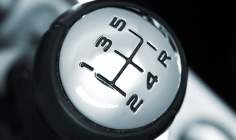
Only 10% of cars meet their stated miles per gallon (MPG) fuel economy claims, according to research by motoring website Honest John.
The research analysed 118,000 reports submitted by UK drivers about their real MPG, and found that, on average, cars used 24% more fuel than advertised.
The BMW X5 was the worst performing, achieving just 66.9% of its advertised fuel economy. Conversely, the Mazda MX-5 exceeded its official MPG, showing an average of 101.5% of the figure.
Honest John claims that since 2015, car manufacturers have optimised vehicles for laboratory conditions to avoid fines for average CO2 emissions exceeding 130g/km, at the expense of real world performance.
The result has been MPG claims recorded under the New European Driving Cycle (NEDC) test standard that are not true to real world conditions, resulting in an extra 3bn litres of petrol and 2.6bn litres of diesel being used each year.
From September this year, the NEDC will be replaced by the Worldwide Harmonised Light Vehicles Test Procedure (WLTP), which Honest John claims will better reflect real world conditions.
How well do you really know your competitors?
Access the most comprehensive Company Profiles on the market, powered by GlobalData. Save hours of research. Gain competitive edge.

Thank you!
Your download email will arrive shortly
Not ready to buy yet? Download a free sample
We are confident about the unique quality of our Company Profiles. However, we want you to make the most beneficial decision for your business, so we offer a free sample that you can download by submitting the below form
By GlobalDataDaniel Powell, managing editor at Honest John, said: “Real MPG has shown that, for the majority of drivers, advertised fuel economy figures are quite simply too good to be true.
“There’s clearly a need for change in the way that MPG is measured, as the real world figures don’t reflect those of laboratories.”
The website claims that this is part of a larger cost-of-motoring crisis, which has also been impacted by changes to Vehicle Excise Duty (VED), which could add more than £500 to the cost of driving.
Due to enter into force on 1 April this year, various groups have warned of its potential negative implications, with the BVRLA warning it could damage the car rental industry.
Honest John claims that miscalculated MPG will increase the financial burden, stating: “The UK’s best-selling car – the Ford Fiesta 1.0 EcoBoost 100PS petrol, now costs £5173 to fuel and tax over four years, which is £1372 more than its official fuel economy figures suggest.”







